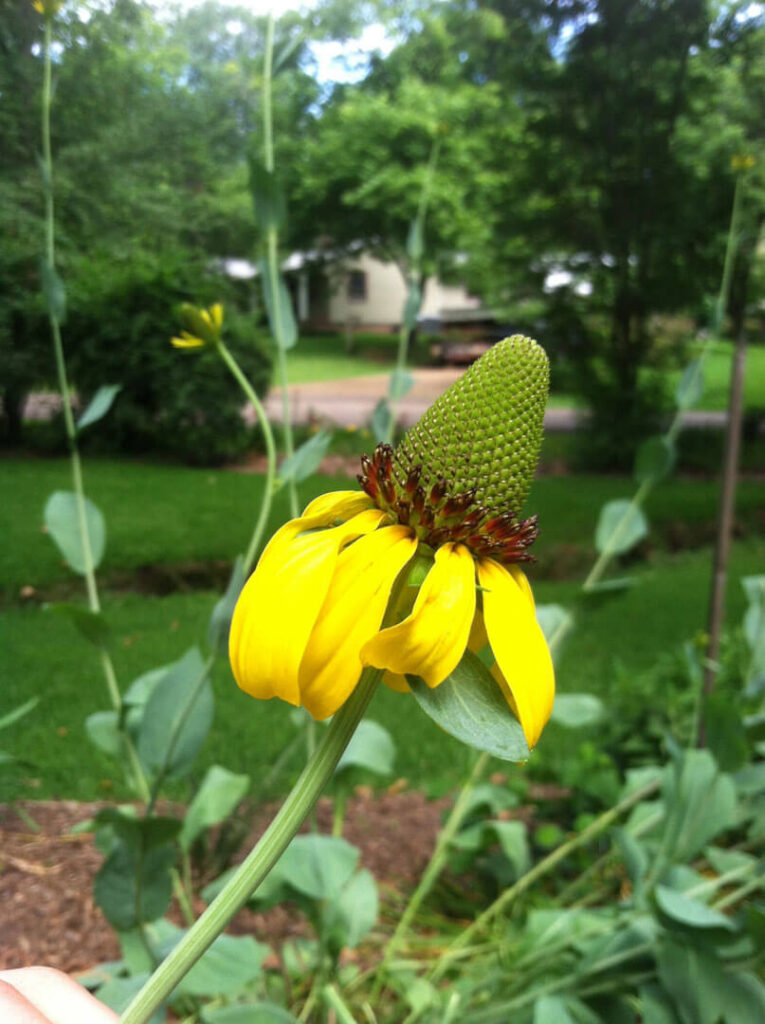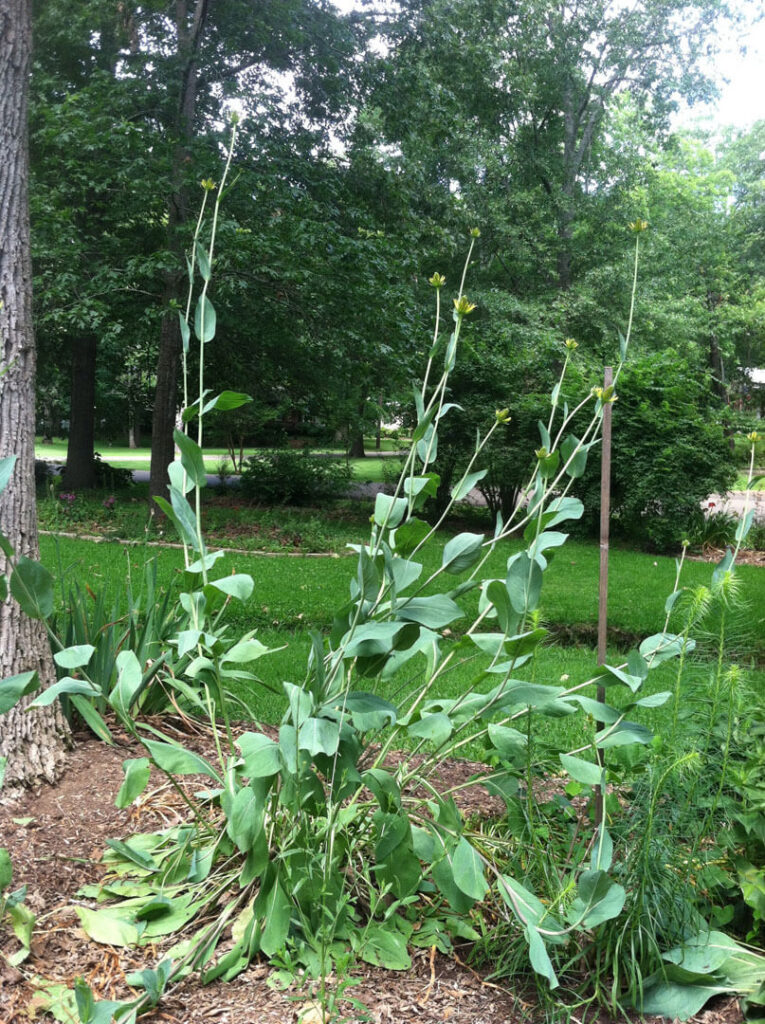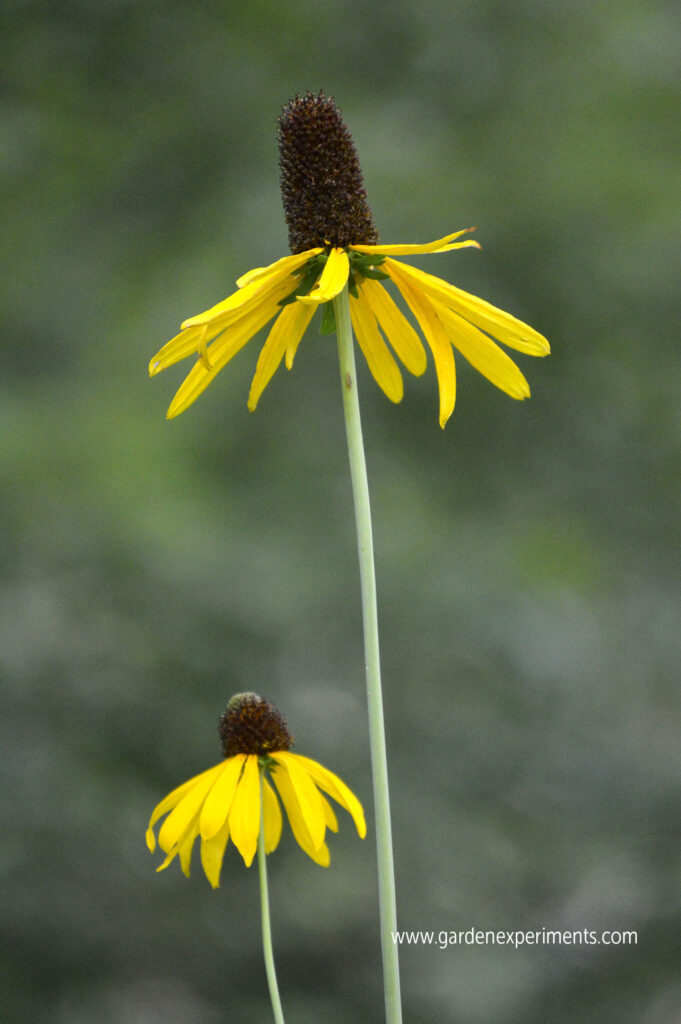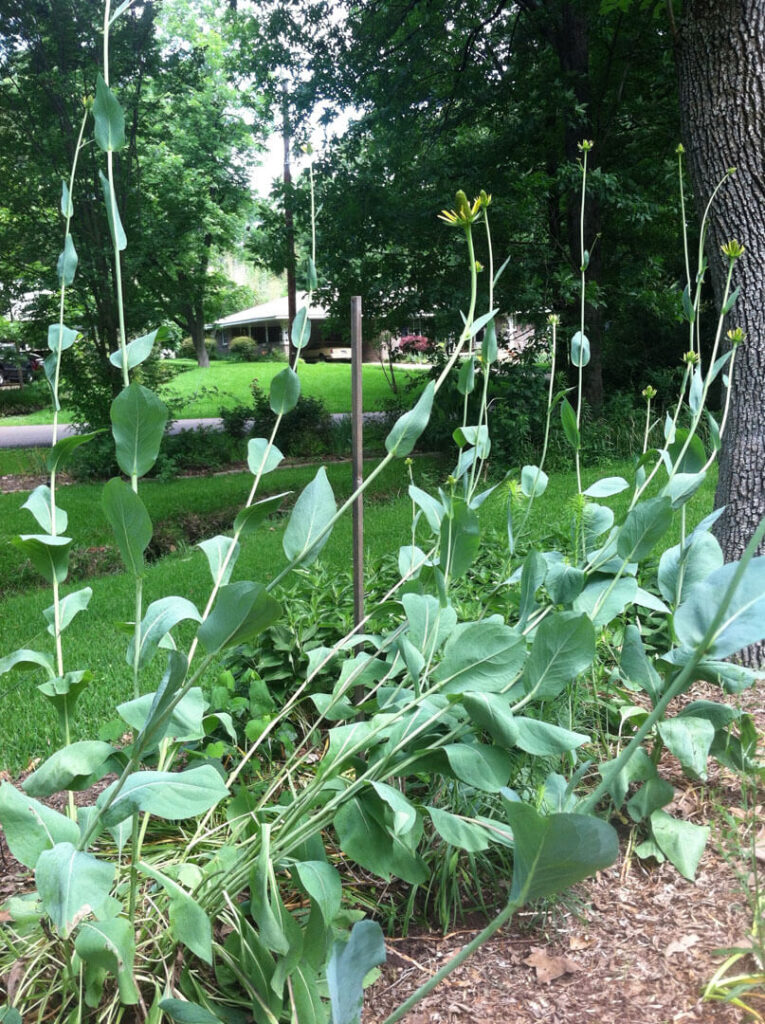Rudbeckia maxima, otherwise known as the giant coneflower, is in the Asteracea family.
The flower resembles a brown-eyed Susan, but the petals hang down, and the center is much taller.
This plant can grow up to 7 feet tall. Planted in a large group, it makes a nice visual impact.
Other common names for this wildflower include cabbage leaf coneflower (due to the shape of the basal leaves) and giant brown-eyed Susan.
Native Range
It is native to northeast and east Texas, northwest Louisiana, southwest Arkansas, and southeast Oklahoma.
Where to Plant Giant Coneflower
These showy flowers are great for drier spots in your garden. It is drought tolerant despite being found in moist soils in its native habitat. It is hardy in USDA zones 4 to 9.
I have planted them in the one bed that tends to be very dry between rains. They are doing well, but the flowers often require staking to remain upright.
Bloom Time and Light Requirements
Giant coneflower is perennial and blooms in the summer. It requires full sun, though it will tolerate part shade. You will get more blooms in full sun than in part shade.
Wildlife Value
The blooms attract butterflies and, if left to seed, provide a food source for birds.
For those of us that have deer that visit the garden, this is a good choice as this plant is deer resistant.
How to Propagate Giant Coneflower
This plant reproduces both by seed and by the spreading of rhizomes. As your coneflowers grow and spread, you can separate them to transplant plants to other locations or propagate them by root cuttings.
Here’s a great guide on propagating plants by root cuttings: http://www.weekendgardener.net/plant-propagation/rootcuttings-120812.htm.





